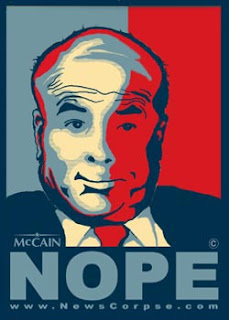Often times in pop culture parodies and spoofs of classic or mainstream art can be used to create a specific emotional effect in a viewer. This controversial Esquire cover depicts Muhammad Ali maimed with arrows, posing as a martyr the way St. Sebastian was depicted in artistic representations of his death. Much like the saint, Ali was persecuted for his own religious beliefs by being barred from the boxing ring when he refused to be inducted into the U.S. Army. The historical reference to the death of the saint intensifies the viewer’s empathy with Ali, acknowledging that he, too, has suffered for standing up for what he believes in.
References like this are abundant in graphic art, particularly with pop culture and political references. For example, Obama’s “Hope” logo was extremely popular during the 2008 election for not only its political message, but also for the enormous amount of parodies that came with it.
While some of these images have political messages of their own, others were created simply for comedic value (particularly the Star Wars ones), and serve only to entertain. Using a widespread, highly-recognizable template as a means of communication adds impact to the audience’s reaction to it, regardless of what the artist’s original intent may have been.







No comments:
Post a Comment